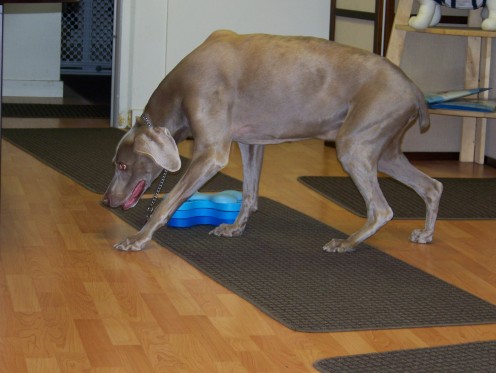Many people see a dog with hind-leg weakness and they automatically think the dog is suffering. This is our human nature. We are sensitive to events that cause pain and suffering. Although bilateral proprioceptive stall looks terrible sometimes – the dog is not suffering with pain.
Bilateral Proprioceptive Stall exhibits symptoms such as:
- Stool incontinence
- Bent hind-knees walking (looks as though dog can not straighten legs)
- Unable to have voluntary muscle control in hind-quarters
- Shaking, limping and occasional skipping a step with hind leg
- General appearance of clumsiness to hind legs, while having strong chest and front legs
- Unable to stand with back legs on wooden, tile, or other smooth hard surfaces (slipping and collapsing results)
- Inability to walk on slippery wet surfaces when could before (hind legs slip and collapse)
- Unpredictable hind leg mobility, sometimes does really well, other times can not get pelvis off floor
- Gradual, progressive illness, worsens overtime
- Can get temporary relief of hind leg weakness with professional therapists (dog hydrotherapy)
I made this video a while ago to try and explain to people what happens with bilateral proprioceptive stall in older dogs. Sorry that it is pixilated. Obviously, I am not a videographer. I am improving my skills as I go.
Hope you enjoy this video and that it sheds some light on bilateral proprioceptive stall in aging dogs.
If you have a dog with hind leg weakness leave me a comment on how you manage below:

